The famous journey by Captain Meriwether Lewis and Lieutenant William Clark to explore the Louisiana Purchase, map out the Missouri River and find the fabled “Northwest Passage” to the Pacific Ocean is an important part of American History. Never before had such an expedition been undertaken and considering that they were traveling into uncharted and unsettled country, the survival challenges alone made this an epic journey.
Lewis and Clark were experienced officers and the men they took with them were mostly experienced soldiers. But survival in combat doesn’t necessarily prepare one for surviving in the wilds.
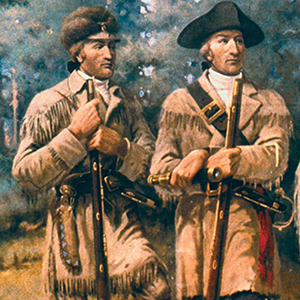
The expedition would be crossing unknown terrain and facing many unforeseen situations before they returned. Everything they needed would either have to be taken with them or found in nature, as there would be absolutely no chance for resupply.
Nor was there any means of rescue, other than what they could accomplish themselves, retracing their steps back to civilization.
This meant that they had to pack carefully, ensuring they had everything they needed. Even so, they were limited in what they could bring by the capacity of their boat, a 60 foot long keelboat, with a capacity of 8 tons, including their team of 45 people.
Even so, they brought an amazing collection of equipment and supplies with them. Records of this survive to today. From it, we can learn a lot about what it takes to survive for prolonged periods of time in the wild.
Related: 13 Prepper Items You Should Look for at Goodwill
Weaponry
One of the first things we find on the list of their supplies were rifles, the finest rifles money could buy at the time. In fact, the rifles they chose to take with them were so new, they were actually prototypes of a new 1803 model, .54 caliber rifle. They also took considerable stores of powder and lead for making shot. Even the powder was packed in lead containers, which could be converted to additional shot.
But that wasn’t the only unique gun they took with them. They also brought along a Girandoni air rifle, which had a 22 round capacity and operated off of air at an incredible 800 PSI. It was the fastest shooting rifle of its day for those 22 rounds, as it could be reloaded and cocked in about three to four seconds. But once the magazine was shot, the air reservoir had to be refilled, which required 1,500 strokes of its special pump. This rifle was impressive enough, that it was used as a sniper rifle by the Austrian army. Lewis, whose rifle it was, used it to impress the Indians they dealt with along the way.
This rifle was impressive enough, that it was used as a sniper rifle by the Austrian army. Lewis, whose rifle it was, used it to impress the Indians they dealt with along the way.
But Lewis & Clark didn’t just take rifles and shot along, they also took along a considerable stock of tools and parts to repair those guns, knowing that they would need to be repaired along the way. Without this stock of parts, they may have never survived the journey, as they used their rifles for both hunting and defense.
Warm Clothing
Weather was likely going to be an issue for the expedition; so they made sure to take along the warmest clothing they could find. This was all made of wool, which may not seem so innovative to us today.
But wool is about the only cloth which will retain at least some of its insulating value when wet. None of our modern miracle fabrics can do that. Considering that they were traveling by boat, having clothing which would keep them at least somewhat warm, even when wet was an important consideration.
Tools
In addition to the gunsmith’s tool kit they took along, Lewis & Clark had an impressive collection of other tools as well, enough to keep a carpenter happy.
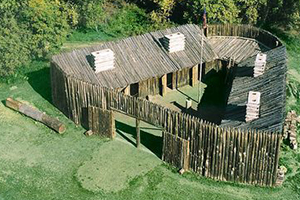 Since they had no means of resupply or repair, other than what the members of their expedition did, these tools allowed them to make things that they needed and perform repairs to their boat.
Since they had no means of resupply or repair, other than what the members of their expedition did, these tools allowed them to make things that they needed and perform repairs to their boat.
As winter approached in the first year of their expedition, the team had to prepare winter lodgings, which were called Fort Mandan.
Had they not had those tools along, they would have had to spend the winter in tents, which would have meant lives lost to hypothermia.
Materials for Making Shelters
They didn’t have ripstop nylon tarps or rescue blankets to make temporary shelters with. What they did have was heavy cloth, something akin to canvas. Knowing they might very well need to make shelters to stay the winter in, Lewis brought along 150 yards of this and other cloth.
Besides the tools and material, the expedition had a considerable amount of cordage with them; both light cordage and heavier rope. This was probably mostly hemp rope, as that was the common rope of the day.
Honing Stone
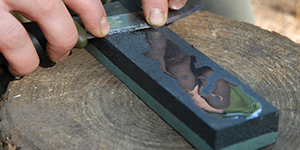
The knife is considered to be the most basic survival tool. Yet many people forget to bring along a honing stone to go along with that knife.
I rarely see that included in any lists for bug out bags or survival kits. Yet Lewis & Clark understood the need to be able to sharpen their knives and brought along an oil stone.
Extra Fire Starters
Fire is an important part of survival and they went prepared. Even though the expedition consisted of only 45 members at the outset, they brought along 100 flints and 30 fire starting steels. This is in addition to the 500 flints for their rifles. Obviously they expected their flints to wear out and brought extras.
Emergency Food Supplies
It is clear from looking at the list of what they brought on their journey that they were not planning on living off the food that they were carrying, but rather live off the land.
 Nevertheless, they brought along 150 pounds of dried soup as emergency rations. While not as satisfying as a nice bison steak, I’m sure there were many a night where that dried soup ensured that they did not go hungry, especially in the winter.
Nevertheless, they brought along 150 pounds of dried soup as emergency rations. While not as satisfying as a nice bison steak, I’m sure there were many a night where that dried soup ensured that they did not go hungry, especially in the winter.
The expedition also took a considerable amount of salt along with them. Salt is not only necessary as a supplement to our food, but also for preserving meat.
While I don’t know if they preserved any meat along the way, it is clear from the amount they took that they were thinking of more than just seasoning their food.
Fishing Gear
Many people keep a survival fishing kit in their bug out bag. This practice might have started with the Lewis & Clark expedition, which brought along four gross (480) fishing hooks and 12 bunches of “drum line” fishing line.
Barter Goods
While this was mostly an exploratory expedition, part of that was to meet with the various Indian tribes they crossed paths with along the way. With that in mind, the expedition’s luggage contained a considerable amount of barter goods. They would have the ability to trade for whatever they needed, that they didn’t have with them.
However, these weren’t actually used to barter, but rather as gifts to the Indians. Lewis’ means of dealing with the Indians was to try and sell them on the idea of being part of the United States of America. These gifts, along with various pieces of technology that they demonstrated to the natives (like the Girandoni air rifle), were part of that campaign.
Books
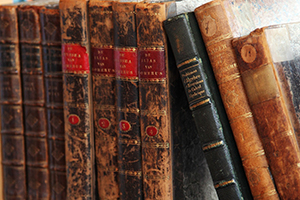 Before leaving on the trip, Lewis spent a considerable amount of time studying various areas of science, so that he would be ready to record what they discovered along the way. Nevertheless, he brought along references to use, not relying only on his memory.
Before leaving on the trip, Lewis spent a considerable amount of time studying various areas of science, so that he would be ready to record what they discovered along the way. Nevertheless, he brought along references to use, not relying only on his memory.
The kind of books that Lewis brought on this expedition can be likened to us carrying along a book on edible plants or herbal medicine in our bug out bag. They were the same sorts of books.
Medicines
Finally, the expedition left prepared for illness and injury. While the level of medicine in the early 1800’s wasn’t anything like what we know today, Lewis & Clark brought the best of what was available. They knew that getting through the entire journey without any of their soldiers suffering harm or illness was unlikely. Therefore, they went prepared for it.
You may also like:
How To Make Survival Ration Bars At Home
These Driveway Weeds Have Pain-Killing Properties (Video)
The Ultimate Meat Processing Charts for Preppers
Bean and Rice Survival Soup; Easy and Adaptable Recipe
11 Things Native Americans Carried With Them To Survive In The Wild

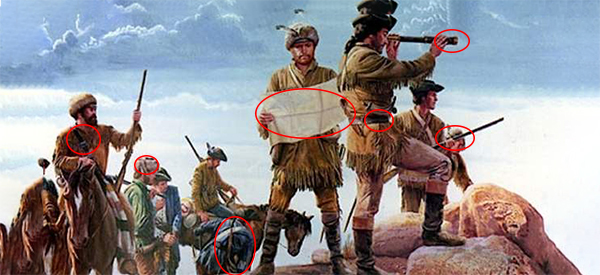
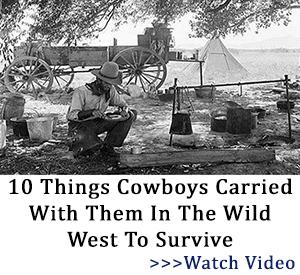













Very nice article… ALWAYS bring MORE than you need!
Better to have and not need, than to need and not have. Not sure who said it but it still applies today.
There were at least three reasons why the gun powder was sealed in lead containers. The first was that the container could be melted down for bullets after it was empty. The second was it was more waterproof to seal the gun powder in lead rather than wooden casks which were usually used to store gun powder. The third was most ingenious. If the gun powder had been sealed in wooden casks, they would float if their boat capsized. They would spend precious days scouring the river banks for miles downstream looking for the wooden casks which would have been carried off by the current. Sealing the powder in lead insured that the powder boxes would sink almost straight to the bottom so that they would know the approximate location of the powder boxes in the event the boat capsized and would be better able to retrieve the precious, life-saving powder.
Had it been me provisioning the boat, I would have stored the gun powder in wooden casks so that I could take more with me because the wood was lighter than lead. This would have been two mistakes. The first time the boat capsized, and it did, the powder would have been distributed down the river who knows how many miles. Secondly, wood was not in short supply. After the cask was empty, it would have served little purpose.
This illustrates the preppier lessons we all need to heed. When bugging out, try to take only multiple use items rather than single use items. Secondly be creative in your thinking. Don’t be locked into stereotypical ideation.
Lash the casks to each other and to something else.
Only need to hunt for the bunch.
Perhaps lash them to a single anchor.
Liberals idea of multi use item – a CELL PHONE.
Conservative idea of multi use item is a LEATHERMAN’.
Lewis and Clark were the original bad@sses of America.
In the bad@ss department, read some of the stories about the American Revolution. Every battle, Valley Forge, Cowpens, and the whole Carolina/Virginia campaign. Courage and valor do not begin to describe …
Very interesting! The other resources they took were the people…not only the original crew, but the native guides that they had.
We’ve all heard about Sacajawea coming with them to interpret and help guide them, but there were other, short-term guides who would get them from point a to point b, maybe navigating a particular stretch of river or to the next village where the guide perhaps had relatives. Having someone local, who knows not only the best restaurants but what the bad neighborhoods are and who speaks the language, with your group is a big help and that resource would have been eagerly pounced upon.
Not to mention, if their boat was incapacitated due to damage or the river not having the draft needed, they needed a bunch of people to unload the boat, maybe portage the contents and the boat itself to a better stretch of the river, and reload it.
Too often, we look at shtf as a solitary event, with perhaps our dependants in tow. History shows, however, that if you are traveling through what would essentially be “enemy territory” that there is indeed safety in numbers.
i haven’t read L&C in a while but I remember one winter they needed help from the Indians to avoid starvation. It was a bad winter for game, probably as a result of previous drought, but even the Tribal People were down to eating their dogs and horses because the game they killed was starving and didn’t have any fat or meat. An old homesteader friend of mine was telling me about killing Elk in Alaska, since I hunt at Wal Mart I expressed the usual sympathy for the beautiful Elk but he said, that’s our meat for the winter, once the snow starts nobody goes anywhere. If you have a couple sets of Antlers up on the roof, everybody knows you’re doing fine. I myself have a DTV dish.
WallyWorld will be the first store ransacked. Electronics will be the first items looted until folks figure out that one can’t eat the 136 inch HDTV nor drink it. Then a WallyWorld run will require fire support by a Marine rifle squad at a minimum. Your best bet is the small Indian or Peruvian grocery store in an slightly less tha upscale neighborhood.
During the Cuban missile crisis, a co-worker seriously informed me that he planned on hunting the San Bernardino mountains for wildlife. I hope when I asked him how many hunters he figured there were in San Bernardino, Riverside, Orange, Los Angeles and Ventura Counties that he gave serious thought to that figment of his imagination.
I suspect that any wildlife that exists after an EOTW event in the LA area will have a shorter life span than Epstein in Rikers.
A hunting expedition in any of the mountains surrounding the LA basin will be like a re-enactment of the battle of Fallujah. A long time ago after a co-worker returned from a deer hunting expedition I asked him if he had any luck. He told me no, but he had a couple of good sound shots.
I asked, “A couple of what?”
He said, “You know, you hear a sound in the bushes and take a shot. But I didn’t hit anything.””
Mental note to self, “Make sure you never, ever hunt with this idiot.”
I will say that in my opinion, he wasn’t the brightest light bulb at that place of employment. There wasn’t a contest to determine who was the dumbest, but I am sure that he certainly would have been a strong contender for the title had the other employees ever been polled.
As always a good read and advice, Keep up the good work
I like this. L&C were heroes to us when I was a kid. niio!
Re: L&C, the beststory I have read of their journey and background, is Stephen Ambrose’s “Undaunted Courage: Meriwether Lewis, Thomas Jefferson, and the Opening of the American West.” Great reading, for anyone who follows this period of American history.
L&C’s group also ate candles made out of animal fat when after the dog and horse meat was gone!
And their best survival item was Sacagawea. She new the land, the people, weather, wild animals, and ‘spoke’ sign that was common among peoples along the journey. niio
Lewis and Clark Packing List
Mathematical Instruments
1
Hadley’s Quadrant
1
Mariner’s Compas & 2 pole chain
1
Sett of plotting instruments
3
Thermometers
1
Cheap portable Microscope
1
Pocket Compass
1
brass Scale one foot in length
6
Magnetic needles in small straight silver or brass cases opening on the side with hinges.
1
Instrument for measuring made of tape with feet & inches mark’d on it,…
2
Hydrometers
1
Theodolite
1
Sett of planespheres
2
Artificial Horizons
1
Patent log
6
papers of Ink powder
4
Metal Pens brass or silver
1
Set of Small Slates & pencils
2
Creyons
Sealing wax one bundle
1
Miller’s edition of Lineus in 2 Vol:
Books
Maps
Charts
Blank Vocabularies
Writing paper
1
Pair large brass money scales with two setts of weights.
Arms & Accoutrements
15
Rifle
15
Powder Horns & pouches complete
15
Pairs of Bullet Moulds
15
do. (ditto) Of Wipers or Gun worms
15
Ball Screws
24
Pipe Tomahawks
24
large knives
Extra parts of Locks & tools for repairing arms
15
Gun Slings
500
best Flints
Ammunition
200
Lbs. Best rifle powder
400
lbs. Lead
Clothing
15
3 pt. Blankets
15
Watch Coats with Hoods & belts
15
Woolen Overalls
15
Rifle Frocks of waterproof Cloth if possible
30
Pairs of Socks or half Stockings
20
Fatigue Frocks or hinting shirts
30
Shirts of Strong linnen
30
yds. Common flannel.
Camp Equipage
6
Copper kettles (1 of 5 Gallons, 1 of 3, 2 of 2, & 2 of 1)
35
falling Axes.
4
Drawing Knives, short & strong
2
Augers of the patent kind.
1
Small permanent Vice
1
Hand Vice
36
Gimblets assorted
24
Files do. (ditto)
12
Chisels do. (ditto)
10
Nails do. (ditto)
2
Steel plate hand saws
2
Vials of Phosforus
1
do. (ditto) Of Phosforus made of allum & sugar
4
Groce fishing Hooks assorted
12
Bunches of Drum Line
2
Foot Adzes
12
Bunches of Small cord
2
Pick Axes
3
Coils of rope
2
Spades
12
Bunches Small fishing line assorted
1
lb. Turkey or Oil Stone
1
Iron Mill for Grinding Corn
20
yds. Oil linnen for wrapping & securing Articles
10
yds do. do. (ditto) Of thicker quality for covering and lining boxes. &c
40
yds Do. Do. (ditto) To form two half faced Tents or Shelters.
4
Tin blowing Trumpets
2
hand or spiral spring Steelyards
20
yds Strong Oznaburgs (strong cloth)
24
Iron Spoons
24
Pint Tin Cups (without handles)
30
Steels for striking or making fire
100
Flints for do. do. do. (ditto)
2
Frows
6
Saddlers large Needles
6
Do. (ditto) Large Awls
Muscatoe Curtains
2
patent chamber lamps & wicks
15
Oil Cloth Bags for securing provision
1
Sea Grass Hammock
Provisions and Means of Subsistence
150
lbs. Portable Soup.
3
bushels of Allum or Rock Salt
Spicies assorted
6
Kegs of 5 Gallons each making 30 Gallons of rectified pirits such as is used for the Indian trade
6
Kegs bound with iron Hoops
Indian Presents
5
lbs. White Wampum
5
lbs. White Glass Beads mostly small
20
lbs. Red Do. Do. (ditto) Assorted
5
lbs. Yellow or Orange Do. Do. (ditto) Assorted
30
Calico Shirts
12
Pieces of East India muslin Hanckerchiefs striped or check’d with brilliant Colours.
12
Red Silk Hanckerchiefs
144
Small cheap looking Glasses
100
Burning Glasses
4
Vials of Phosforus
288
Steels for striking fire
144
Small cheap Scizors
20
Pair large Do. (ditto)
12
Groces Needles Assorted No. 1 to 8 Common points
12
Groces Do. (ditto) Assorted with points for sewing leather
288
Common brass thimbles – part W. office
10
lbs. Sewing Thread assorted
24
Hanks Sewing Silk
8
lbs. Red Lead
2
lbs. Vermillion – at War Office
288
Knives Small such as are generally used for the Indian trade, with fix’d blades & handles inlaid with brass
36
Large knives
36
Pipe Tomahawks – at H. Ferry
12
lbs. Brass wire Assorted
12
lbs. Iron do. Do. (ditto) generally large
6
Belts of narrow Ribbons colours assorted
50
lbs. Spun Tobacco.
20
Small falling axes to be obtained in Tennessee
40
fish Griggs such as the Indians use with a single barbed point – at Harper’s ferry
3
Groce fishing Hooks assorted
3
Groce Mockerson awls assorted
50
lbs. Powder secured in a Keg covered with oil Cloth
24
Belts of Worsted feiret (woven wool tape) or Gartering Colours brilliant and Assorted
15
Sheets of Copper Cut into strips of an inch in width & a foot long
20
Sheets of Tin
12
lbs. Strips of Sheet iron 1 In. wide 1 foot long
1
Pc. Red Cloth second quality
1
Nest of 8 or 9 small copper kettles
100
Block-tin rings cheap kind ornamented with Colour’d Glass or Mock-Stone
2
Groces of brass Curtain Rings & sufficently large for the Finger
1
Groce Cast Iron Combs
18
Cheap brass Combs
24
Blankets.
12
Arm Bands Silver at War Office
12
Wrist do. do. Do. (ditto)
36
Ear Trinkets Do. Part do. (ditto)
6
Groces Drops of Do. Part Do. (ditto)
4
doz Rings for Fingers of do. (ditto)
4
Groces Broaches of do. (ditto)
12
Small Medals do. (ditto)
Means of Transportation
1
Keeled Boat light strong at least 60 feet in length her burthen equal to 8 Tons
1
Iron frame of Canoe 40 feet long
1
Large Wooden Canoe
12
Spikes for Setting-Poles
4
Boat Hooks & points Complete
2
Chains & Pad-Locks for confining the Boat & Canoes &c.
Medicine
15
lbs. Best powder’s Bark
10
lbs. Epsom or Glauber Salts
4
oz. Calomel
12
oz. Opium
_
oz. Tarter emetic
8
oz. Borax
4
oz. Powder’d Ipecacuana
8
oz. Powder Jalap
8
oz. Powdered Rhubarb
6
Best lancets
2
oz. White Vitriol
4
oz. Lacteaum Saturni
4
Pewter Penis syringes
1
Flour of Sulphur
3
Clyster pipes
4
oz. Turlingtons Balsam
2
lbs. Yellow Bascilicum
2
Sticks of Symple Diachylon
1
lb. Blistering Ointments
2
lbs. Nitre
2
lbs. Coperas
Materials for making up the Various Articles into portable Packs
30
Sheep skins taken off the Animal as perfectly whole aspossible, without being split on the belly as usual and dress’d only with lime to free them from the wool; or otherwise about the same quantity of Oil Cloth bags well painted
Raw hide for pack strings
Dress’d letter for Hoppus (knapsack)-Straps
Other packing
Lessons Learned From The Lewis & Clark List
From a preparedness standpoint, I enjoyed discovering the categories of what Lewis and Clark deemed important for their expedition.
INSTRUMENTS
Navigation, weighing, measuring, writing, reading
ARMS & AMMUNTION
Weapons, rifles, knives, powder & lead
CLOTHING
The basics. Wool and strong linens.
CAMP GEAR
Lots of Axes! (Need wood for fire). Plenty of cordage. Lots of flint (Fire!). Cooking gear. They had the 5 C’s of survivability covered pretty well within the entire list here (cutting, combustion, cover (shelter), cordage, container (cooking) ).
PROVISIONS/FOOD
Portable soup? (lots of that). Lots of salt. Lots of ‘rectified spirits’ (alcohol).
Soup-Salt-Booze…
INDIAN PRESENTS
Lots of stuff here! Barter. Make peace. Avoid getting scalped.
TRANSPORTATION
Boats and Canoes. Missouri River travel.
MEDICINE
How interesting to look at this list before the days of modern medicine. This was ‘modern’ for its day…
MATERIALS FOR PACKS
You couldn’t go down to Cabellas and buy 30 backpacks. You had to make them yourself…